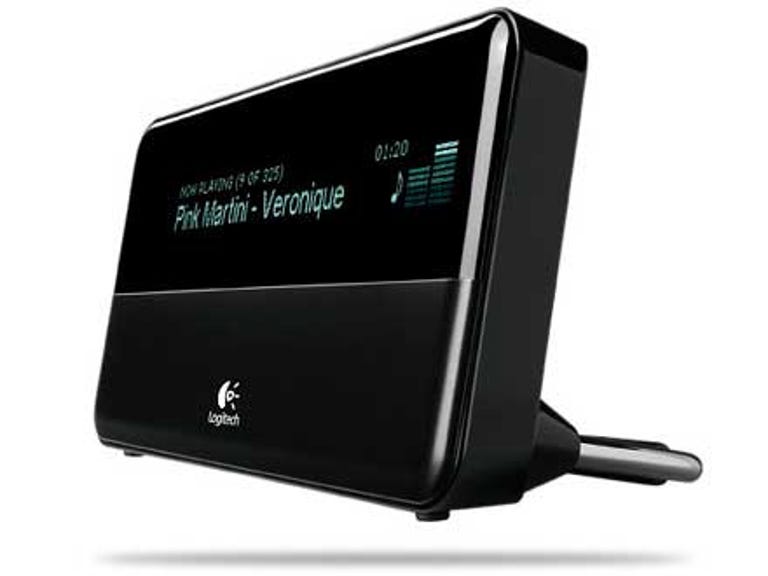 Why You Can Trust CNET
Why You Can Trust CNET Logitech Squeezebox review: Logitech Squeezebox
You couldn't ask for a much simpler audio/Internet radio streamer than the Logitech Squeezebox, although you do pay a premium for that convenience.
Design
Logitech's Squeezebox has a simple design that works either as a standalone unit or integrated into a home audio solution. It looks rather like a single computer speaker, although that's the one thing it's missing. It's a simple wireless streaming box for audio only, which can be either integrated into a home theatre set-up or simply plugged into cheap speakers or headphones. The basic unit we tested came in Henry Ford's favourite colour, black -- although white is available -- and has connections for RCA, digital and 3.5mm audio jacks on the rear, along with a power socket.
The Good
The Bad
The Bottom Line
Features
As you'd expect from a streaming device, the first thing you need are some files to stream -- in the case of the Squeezebox, this covers the majority of the digital music spectrum -- MP3, WMA, WAV, FLAC, AAC and Ogg. It also supports Internet radio services, including Pandora and Rhapsody, although your geographical IP location may limit which services will actually be available.
Serving files out to the Squeezebox involves installing the Slimserver software which is available for Windows, Mac and Linux platforms. Why Slimserver, and not Logiserver? That'd be because the Squeezebox is a rebadged Slimserver device (Logitech bought out parent company Slim Devices a little while back). One slight annoyance is that Slimserver isn't provided in the Squeezebox packaging. Similar to Apple's recent moves with iPods, you've got to download it each and every time. We do get that it's a networked product, and forcing downloads means consumers will have the latest (and hopefully best) version of the server software, but it would still be nice to have a disc with software on it for times when an Internet connection might be down.
It's not strictly necessary to install the Slimserver software -- the Squeezebox can run on its own steam, but this limits you to essentially Internet radio and very simple Alarm clock functions. Without Slimserver, it'll basically beep at you. With Slimserver, you can be woken with your choice of playlists automatically, which is a nice extra, as long as you've got speakers in your bedroom.
Performance
If there's a word to describe setting up the Squeezebox, that word would have to be "easy". The navigation via the supplied remote is simple, and it took us only a couple of minutes to configure it onto a WPA protected wireless network. It then sought out any nearby Slimserver installations. We'd installed Slimserver onto a nearby Macbook, and it found that, read through our iTunes library and was ready to go.
We were struck by the fact that there's no controls on the Squeezebox itself, which would make navigation impossible if the remote is lost or broken. We also hit a few instances where Internet Radio stations would drop out, at which point the Squeezebox would default to playing random tracks from our iTunes library. That's not necessarily the Squeezebox's fault -- the stations involved or our Net connection could be at fault -- but it is a little jarring to go from some cool French Jazz to Megadeth's "Seek and Destroy". As they used to say on Sesame Street, one of these things is not like the other.
At AU$499, there's definitely a price to pay for this kind of convenience, and we'd praise the Squeezebox even more highly if it came with even simple speakers -- thus making it a fully functional alarm clock, amongst other things -- but given that the lower-cost market simply can't match the Squeezebox's ease of use, that's a minor concern.


